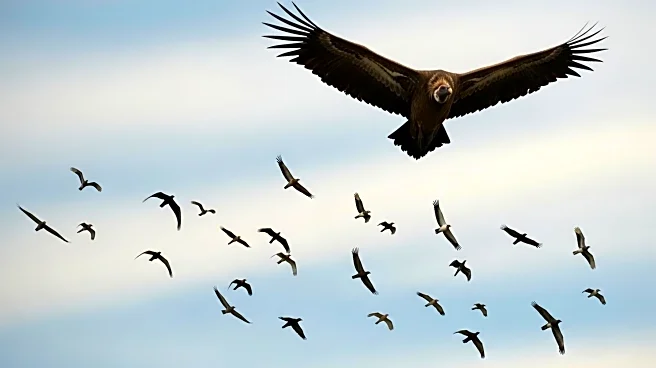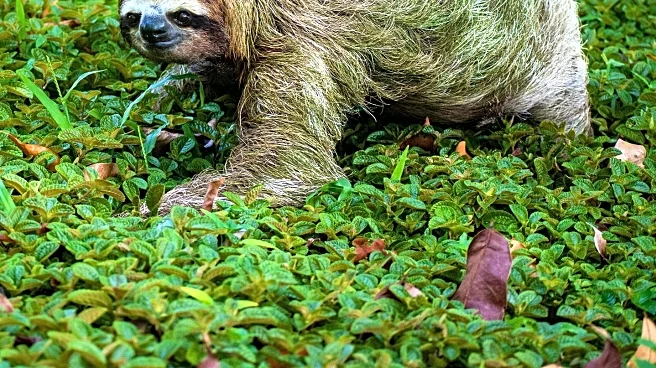What's Happening?
Researchers from the University of Exeter have made a significant discovery regarding leopards, revealing that each leopard possesses a unique roar. This finding allows for individual identification with an accuracy rate of 93%. The study was conducted in Nyerere National Park, Tanzania, where researchers used a combination of camera traps and autonomous recording devices to capture both visual and auditory data. By analyzing the temporal patterns of the leopards' 'sawing' roars, which are low-frequency sounds used for communication, the team was able to distinguish individual animals. This breakthrough offers a novel method for monitoring these solitary and nocturnal creatures, which are often challenging to study due to their elusive nature.
Why It's Important?
The discovery of unique leopard roars is crucial for conservation efforts, as it provides a non-invasive approach to studying leopard populations. Leopards are classified as 'vulnerable' by the IUCN Red List due to habitat loss and human-wildlife conflict. This innovative monitoring technique facilitates more accurate population estimates and aids in conservation efforts. The study also highlights the potential of integrating multiple technologies to gather comprehensive data on wildlife, enhancing our understanding of ecosystems and informing effective conservation strategies. This advancement in bioacoustic monitoring could significantly impact the preservation of leopards and other large carnivores.
What's Next?
The integration of bioacoustic monitoring with other technologies could lead to more comprehensive wildlife studies. Conservationists and researchers may adopt this method to monitor other elusive species, potentially leading to better-informed conservation strategies. As the technology and methods improve, it could also influence policy decisions regarding wildlife protection and habitat conservation. The success of this study may encourage further research into the vocalizations of other animal species, broadening the scope of non-invasive wildlife monitoring.
Beyond the Headlines
This discovery underscores the importance of understanding animal communication and its role in conservation. The ability to identify individual animals through their vocalizations could lead to new insights into their social structures and behaviors. Additionally, this method could reduce the need for more invasive tracking techniques, minimizing human impact on wildlife. The study also raises awareness about the threats faced by leopards, such as deforestation and poaching, and the need for continued efforts to protect their habitats.










